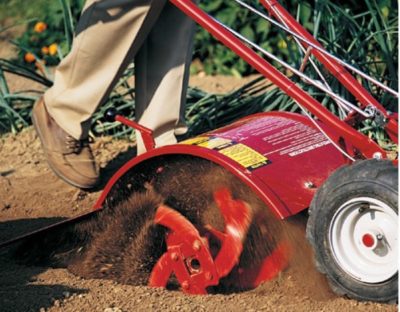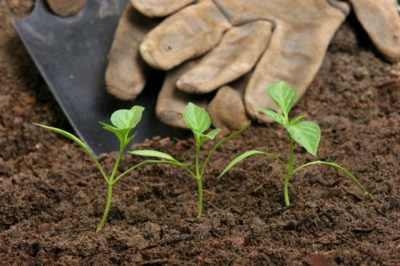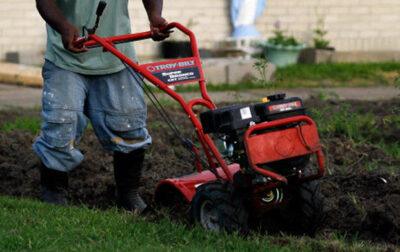|
Listen To The Article
|
Tilling the land has always been a part of traditional gardening, despite the testimony of lush natural vegetation in wild areas unspoiled by man’s hands. Even within the cultivated garden, seeds that accidentally fall among brambles and rocks often present such vigorous growth that they could put well-tended plants in neat garden beds to shame.
Lazy gardeners through the ages would have occasionally taken shortcuts, but it was not until the 1940s, and the Plowman’s Folly by Edward Faulkner, that no-till gardening received attention as a viable alternative to traditional farming practices. The Japanese farmer-philosopher Masanobu Fukuoka of One Straw Revolution took the idea to the extremes and proved it to be both practical and profitable.
In a no-till garden, the soil is left undisturbed under layers of protective mulch. Plantings are done in shallow holes or ditches with minimum disturbance to the soil biome. After a season’s crop, plant remains are not dug up; they are left to join the soil biomass through the action of soil microbes. The soil gets aerated by the action of earthworms and other permanent inhabitants. This method is now considered a holistic and cost-effective way to produce food.
Let’s take a look at the benefits of no-till gardening.
1. Creates healthy soil
When the soil is undisturbed, it protects the soil biomes that consist of several types of soil bacteria, fungi and other microorganisms. They break up the organic and mineral matter in the soil and make it available to plants.
The Best Source For Non-GMO Heirloom Seeds Is Right Here!
Larger critters such as earthworms, beetles, and insect larvae work through different layers of the soil, mixing them up and aerating the soil. This not only makes the soil porous, but increases its water retentive capacity. It also facilitates better root spread, resulting in vigorous plant growth. The thick mulch layer prevents the erosion of top soil by wind and rain. Since crop remains are not removed, the nutrients in the plant tissues are returned to the soil, thus gradually increasing the health and fertility of the soil with every crop.
2. Makes gardening less labor-intensive
Tilling and double tilling are heavy work even with the latest farm equipment. The long process of preparing the soil for planting dissuades many people from attempting vegetable gardening in their land.
 No-till gardening can be practiced without the hassles of double digging the land and turning in compost and manure. A garden can be started quickly over existing soil, whether it is covered in sod or just barren land. Simply spread thick cardboard on the ground and build up layers of compost, straw, grass clipping, newspaper and old leaves, with just a bit of soil in between them. You can plant seeds or seedlings directly in the soil by making a small indentation in the layers. The natural biodegradation process will take care of the rest, and provide the growing plants with essential nutrients and porous soil for good root run.
No-till gardening can be practiced without the hassles of double digging the land and turning in compost and manure. A garden can be started quickly over existing soil, whether it is covered in sod or just barren land. Simply spread thick cardboard on the ground and build up layers of compost, straw, grass clipping, newspaper and old leaves, with just a bit of soil in between them. You can plant seeds or seedlings directly in the soil by making a small indentation in the layers. The natural biodegradation process will take care of the rest, and provide the growing plants with essential nutrients and porous soil for good root run.
3. Saves fuel and water
Since this method of gardening does not require the use of rototillers and other heavy farm machinery to dig planting beds or to clear off crop stumps, a lot of fossil fuel is saved. In addition to the environmental benefits, this translates into considerable energy savings. Read: no trips to the gas station.
The need for additional watering is greatly reduced in no-till gardens. Tilling exposes soil to the drying effects of wind and the sun, resulting in greater water loss. When the land is covered with mulch, sunlight does not fall directly on the soil and heats it up. The rate of evaporation is reduced. The mulch layers and the well-aerated soil underneath capture and store natural precipitation.
4. Reduces chemical load
Animal life thrives in a no-till garden, and that includes both beneficial and harmful organisms. This can be a problem in the initial years of shifting to this method, and is known to result in crop failure and disillusionment. Nevertheless, as the garden matures over several years, the natural competition between the different players somehow keeps diseases and pests under control, often completely eliminating the need for pesticides. The rich soil rarely needs fertilizers. Bacterial and fungal diseases are also controlled without the application of toxic chemicals.
5. Eliminates weeding
Another back-breaking work in traditional gardening is weeding. Soil contains several types of seeds, but they usually do no germinate unless the soil is disturbed. The tilling of the beds exposes these seeds to the light and warmth of the sun, triggering their germination. Weeds are masters of survival. They quickly get a foothold in the tilled soil and offer stiff competition to planted crops for sunlight, water and nutrients, often overtaking them in growth.
New Natural Fertilizer Doubles Garden Production!
 When the beds are not tilled, many of these rogue seeds continue to remain dormant. Even if they germinate later as the soil gradually warms up, the planted seeds would already have a head start. The thick mulch prevents many airborne weed seeds from settling on the soil and sprouting. The few that manage to sprout are easily pulled. The addition of more organic matter at the end of every crop smothers any remaining weeds.
When the beds are not tilled, many of these rogue seeds continue to remain dormant. Even if they germinate later as the soil gradually warms up, the planted seeds would already have a head start. The thick mulch prevents many airborne weed seeds from settling on the soil and sprouting. The few that manage to sprout are easily pulled. The addition of more organic matter at the end of every crop smothers any remaining weeds.
Is No-Till Gardening Chemical Gardening?
Many large commercial farms employ no-till gardening purely for cost savings and liberally use herbicides. Traditionally, weed problem is managed by tilling and cleaning the land of plant debris before the next crop. When this step is skipped, weeds, and even pests, can become a big problem. This has earned a bad name for no-till gardening, and it is often branded as chemical gardening.
Application of toxic chemicals defeats the very purpose of this healthy natural method of agriculture. Crop rotation, generous mulching, and planting of cover crops can help control weed growth and eliminate the need for herbicides. Sadly, a commitment on the part of food production companies and the government to produce and promote chemical-free food is lacking.
Should You Shift To No-Till Gardening?
There are some very good reasons to practice no-till gardening:
For the ecologically conscious – This method reduces your energy, water and chemical footprints.
For a beginner gardener — No-till gardening requires less investment and offers more room for experiment.
For the lazy gardener – An opportunity to prove that “no pain, no gain” is an outdated proverb.
For the adventurous gardener – There are several different ways to do no-till gardening, but it still has plenty of scope for innovation and improvement.
For people with busy schedules – No-till gardening may be the solution you’re looking for. Time and effort required to grow healthy food is drastically reduced.
Nothing can match the satisfaction of growing your own food because — aside from knowing that you have the healthiest produce on your plate — it is a highly fulfilling journey to the very roots of human culture.
Have you tried no-till gardening? What advice would you add? Share it in the section below:
Every Year Gardeners Make This Avoidable Mistake. Read More Here.
 Off The Grid News Better Ideas For Off The Grid Living
Off The Grid News Better Ideas For Off The Grid Living





